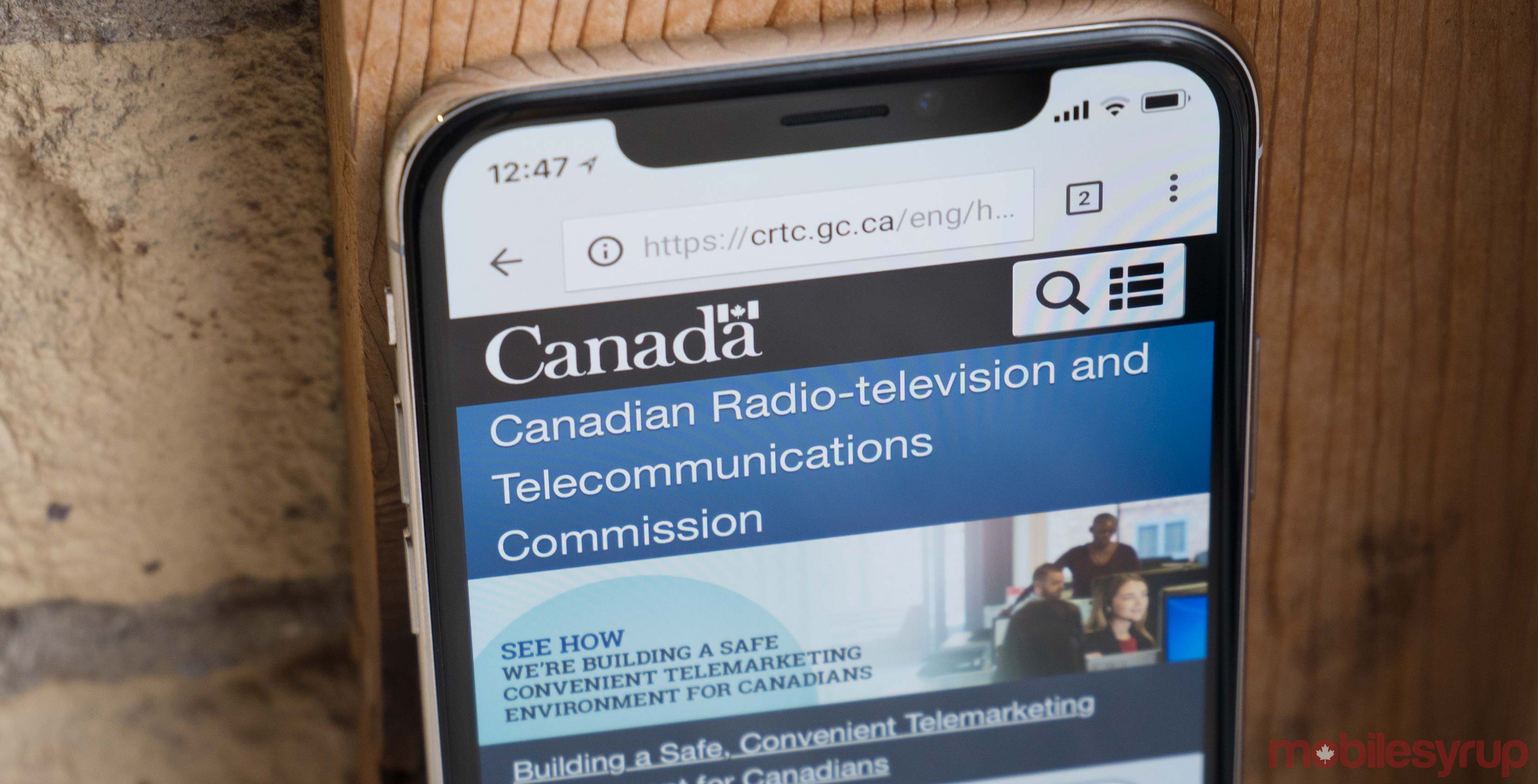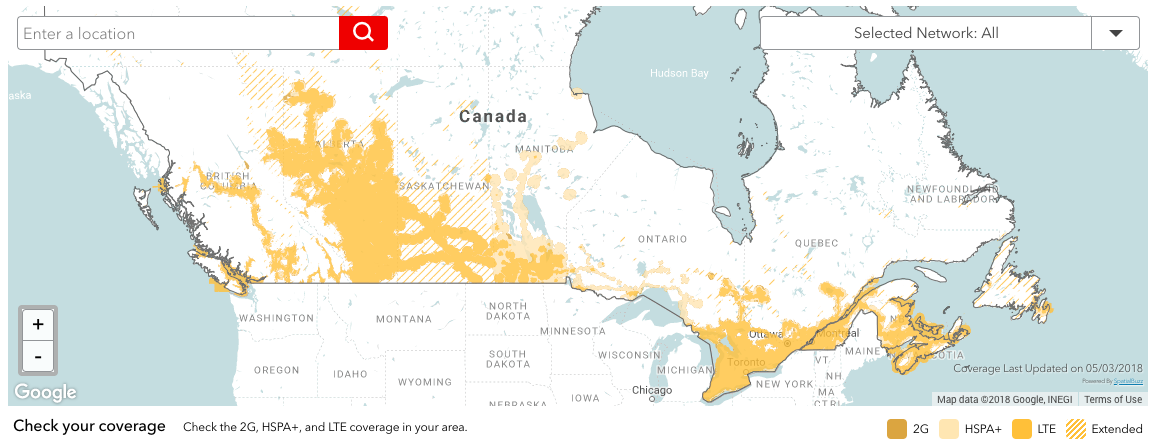
Canadian national carriers Rogers, Bell and Telus have submitted their low-cost data-only plan proposals to the Canadian Radio-television Telecommunications Commission (CRTC), and on the surface, the plans seem to address the CRTC’s initial expectations.
Each carrier’s plan provides access to 4G LTE data; each plan is relatively affordable (Rogers’ plan costs $25 CAD, while Bell’s and Telus’s plans cost $30); and each plan would be accessible to both low-income households and “as many consumers as possible,” as the CRTC originally requested.
However, as representatives from some of Canada’s consumer advocacy groups have told MobileSyrup, the proposed plans might not do enough to alleviate consumer concerns regarding affordable and accessible wireless service.
In short, Rogers proposed a $25/400MB plan, while both Bell and Telus proposed $30/500MB plans.
Plans aren’t as appealing to low-income Canadians
Monica Auer serves as the executive director for the Forum for Research and Policy in Communications (FRPC). She said that, in her opinion, Canada’s Big Three carriers’ proposed plans haven’t truly addressed the needs of low-income Canadians.
“I don’t get the impression that a great deal of care and thought has gone into ensuring that lower-income groups are properly served,” said Auer, in an interview with MobileSyrup.
“Some of the companies speak to the fact that this is basically a cup of coffee-a-day… Are we really saying that for low-income groups… and this is following the argument to its absurd [conclusion]… you have to give up your food for your wireless service? Surely not.”
“I don’t get the impression that a great deal of care and thought has gone into ensuring that lower-income groups are properly served” — Monica Auer, FRPC
John Lawford — the executive director and general counsel for the Public Interest Advocacy Centre — echoed Auer’s sentiments, stating that the federal government expressed a desire to increase access to wireless service.
“That’s not being addressed by these plans,” said Lawford, in a phone interview with MobileSyrup.
Lawford also said that the Big Three carriers haven’t “reached down to make it fit within a lower-income person’s budget.”
Concerns about network and data restrictions
While the proposed plans all provide access to 4G LTE data, it should be noted that there are restrictions imposed on how precisely users can access that data.
For example, Rogers’ plan prevents subscribers from accessing the carrier’s extended domestic network.
This means that subscribers in places like parts of northern Ontario and Quebec, parts of Canada’s prairie provinces and areas of Canada’s maritime provinces, will not be able to fully utilize the plan.

“I see a lot of restrictions around these things,” said Lawford.
Lawford believes that Canada’s Big Three carriers are hesitant to remove restrictions because of the effect that would have on each carrier’s flanker brand.
“These plans suck” — Laura Tribe, OpenMedia
“Companies are putting so many restrictions because they don’t want to cannibalize their other stock,” said Lawford.
With the exception of Rogers, both Bell and Telus have said that their proposed plans would only be available through each carrier’s mid-tier flanker brands: Virgin Mobile and Koodo, respectively.
Laura Tribe, the executive director for Canadian digital rights advocacy not-for-profit OpenMedia, expressed the belief that the plans are intended to be stop-gap measures and not full-fledged solutions.
“These plans suck,” said Tribe. “I think they’re trying to put as many arbitrary restrictions on these plans as possible to make them as unappealing as possible.”
“The reasons we’re in this situation in the first place is because they’re not providing affordable plans.”
“One of the arguments being presented is that those relying on such caps should only use these for necessities” — Monica Auer, FRPC
Lawford expressed similar sentiments as Tribe, describing the Big Three’s reaction to the CRTC’s request as a “half-measure.”
For her part, Auer points out that the real network restriction is the minimal amount of data provided to potential subscribers.
“When we think about the 400-500MB data caps being proposed by Bell, Telus and Rogers, one of the arguments being presented is that those relying on such caps should only use these for necessities (not something as frivolous as Netflix),” said Auer, in an email to MobileSyrup.
She pointed out that, in her role, she regularly needs to download government documents, as “governments are moving many of their proceedings online.”
“Should those who rely on a low-income data cap who want to participate in municipal, provincial or federal proceedings that affect them, be required to pay for that privilege?” said Auer.
Public proceedings, submitting comments and the CRTC’s role as regulator
Now that all three of Canada’s largest carriers have submitted their proposed plans, the CRTC has begun accepting public comments and responses to the issue.
@Bell, @Rogers and @TELUS submitted their proposal regarding lower-cost data-only plans. Tell us what you think about them! Help us better understand your needs for lower-cost #wireless services. https://t.co/dOqGjdfW2G #crtcConsults pic.twitter.com/nDQcF8JvML
— CRTCeng (@CRTCeng) April 25, 2018
Auer told MobileSyrup that she’d like to see more thought put into wireless plans aimed at low-income Canadians.
“You’d have to start off by determining what are the appropriate levels of income cutoffs… what impact does it have,” said Auer.
“We went through groups trying to use the Stats Canada household income data to determine who does and who does not have access to wireless [service]… [and] wireless service is not readily available for lower-income groups.”
Auer said that the FRPC plans on submitting comments to the CRTC. Lawford also told MobileSyrup that the PIAC will be submitting comments on the proposed low-cost data-only plans.
“We’re continuing to pursue other low-volume, occasional-use application” — John Lawford, PIAC
“We’re continuing to pursue other low-volume, occasional-use applications, which I think is complementary to this one,” said Lawford. “That’s part of our plan to put affordability on the front-burner with the Commission.”
Lawford added that once comments have been submitted, the CRTC will be responsible for ensuring that Canadians have access to affordable plans.
“It’s the CRTC’s job to see what an affordable plan really looks like and nudge [Canada’s carriers] closer to it,” said Lawford.
Tribe also mentioned that OpenMedia will be looking to Innovation, Science and Economic Development Canada (ISED), as well as innovation minister Navdeep Bains, “to see what he is able and willing to do.”
MobileSyrup may earn a commission from purchases made via our links, which helps fund the journalism we provide free on our website. These links do not influence our editorial content. Support us here.


